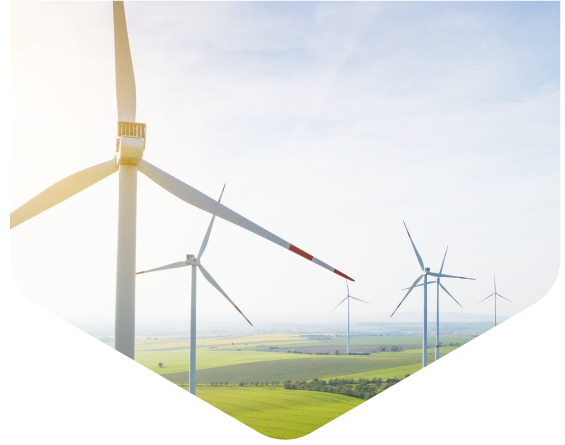Small Actions, Big Impact
Start Reducing Your Business Emissions Now.

Reducing Your Carbon Footprint
Our planet is in danger due to high levels of greenhouse gases caused by human activity. They trap the sun’s rays, reflect them back to the earth and cause temperatures to rise. Our aim is to balance the emissions we release with those absorbed by the planet, resulting in a net-zero increase in greenhouse gases. Reducing your carbon footprint to the lowest rate possible makes achieving this goal a lot easier.

Optimise Your Energy Use
Your business could be wasting more energy than you realise. Poor insulation, old equipment and wasteful practices can all be a drain on your energy usage, increasing your carbon footprint and energy bills.
Addressing your business’s energy waste can help decrease your carbon footprint and ensure you’re getting the most from your spending. Our consultants will use data from your audit to make practical suggestions about your business energy, offering advice and support to help reduce energy waste and optimise your usage.
Nature Based Clean Diesel
We work directly with leading suppliers to bring our clients the lowest emission advanced fuel available in the market. Our biofuel partners are all verified under UK industry standards and are successfully supporting our clients to decarbonise their transport fuel and take action on climate change.
We’ll help you switch your diesel to reduce emissions of particle pollution by up to 85% and CO2 emissions by up to 90%. Instantly. It’s one of the easiest and fastest ways your business can make a positive climate impact.
Learn More
Why Choose Tariff.com?
As well as helping to save the planet, there are many other practical reasons as to why your business might want to reduce your carbon emissions:

Start Your Net-Zero Journey Today
Climate change is increasingly urgent for governments, companies, and consumers alike. We all have a responsibility to make changes, including businesses, who will be closely watched by many. After all, doing right by the planet is doing right by your customers.
However, your transition to net-zero doesn’t have be a burden. Tariff.com empowers businesses to change for the better, offering tailored support to make sustainability simpler. We employ a comprehensive 5-step strategy to transform your emissions and revolutionise your energy usage.
Our 5 Step Strategy

1. Calculate
We’ll measure the carbon footprint and environmental impact of your business.

2. Target
We’ll help you set achievable targets to tackle your emissions.

3. Reduce
We’ll help reduce your consumption and optimise energy usage.

4. Offset
We’ll offset your remaining emissions with carbon credits and environmental projects.

5. Results
We’ll measure the carbon footprint and environmental impact of your business.

Switch to a Green Tariff
If you’re serious about reducing your carbon footprint, switching to a green energy tariff should be at the top of your to-do list. Green energy is produced from natural sources, such as solar, wind or water.
Unlike fossil fuels, renewable energy doesn’t produce carbon dioxide or greenhouse gas emissions. Switching to a green tariff can therefore reduce your carbon footprint and represent a big step forward on your journey to net-zero.
Learn MoreFrequently Asked Questions
Reducing emissions helps tackle climate change at the source by lowering the greenhouse gases your business produces. It’s the most effective way to make a direct, lasting impact on your carbon footprint.
Start by measuring your current emissions to identify the biggest sources. This data-driven approach allows you to prioritise actions that will have the greatest impact and set realistic reduction targets.
Some changes, like switching to LED lighting or optimising heating and cooling, can show immediate savings and emission reductions. Larger projects may take longer but offer significant long-term benefits.
Yes. Demonstrating a commitment to sustainability can strengthen your brand image, attract environmentally conscious customers, and improve relationships with investors and partners.
You can reduce emissions by improving energy efficiency, switching to renewable energy, optimising transportation, reducing waste, and engaging suppliers to lower supply chain emissions.
Not always. Many reduction measures, such as improving energy efficiency or reducing waste, can actually save your business money in the long run while also reducing emissions.
While some actions can be implemented internally, working with sustainability experts can help you develop a comprehensive strategy, access funding or incentives, and achieve more significant reductions.
Reducing emissions means cutting them at the source, while offsetting compensates for unavoidable emissions by supporting external projects. Reduction should always come first before offsetting.
Get In Touch Today
WE CAN HELP WITH...
- Business Gas
- Business Electricity
- Business Water
- Heating Solutions
- Electronic Vehicle Charging
- Renewable Energy
- Net-Zero Solutions
- Solar Panels

















